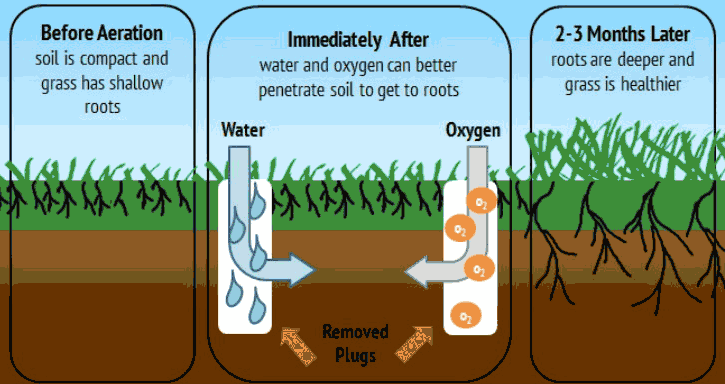|
Members |
Why aerify?
It's a perfect, sunny morning and you've just reached the first green in regulation. You feel great and you know you're within birdie range. Then, you see them, those little holes in the green. Arrrgh! They've just aerified the course, and it's going to ruin your round, right?Well, maybe not. Consider the fact that PGA Tour legend Tom Watson shot a sizzling record 58 at his then-home course, Kansas City Country Club, just days after the greens had been aerified.
Consider also that aerification is merely a short-term disruption that has long-term benefits for the course. When you see them, remember that without those little holes, the greens would eventually die.
Like so many things, the quality of a good putting green is more than skin deep. In fact, the condition of a green has a lot to do with what goes on below the surface. In order to keep grass growing at 3/16-inch you have to have deep, healthy roots. Good roots demand oxygen. In good soil, they get the oxygen from tiny pockets of air trapped between soil and sand particles.
Over time, the traffic from golfers' feet (as well as heavy mowing equipment) tends to compact the soil under the putting green - particularly when the soil contains a lot of clay. When soil becomes compacted, the air pockets on which the roots depend are crushed, and the roots are essentially left gasping for air. Without oxygen, the grass plants will wither and die.
Aerification is a mechanical process that creates more air space in the soil and promotes deeper rooting, thus helping the grass plants stay healthy. In most cases, it's done by removing 1/2-inch cores (those plugs you sometimes see near a green or in fairways). The spaces are then filled with sand "topdressing" that helps the soil retain air space and makes it easier for roots to grow downward.
Other aerification techniques use machines with "tines" or knives that simply poke holes through the soil profile. A newer technique even uses ultra high-pressure water that's injected through the soil profile to create small holes that relieve some compaction but heal quickly.
The bottom line is that aerification is a necessary practice. But before you curse the superintendent for ruining your day, just think of Tom Watson.
|

